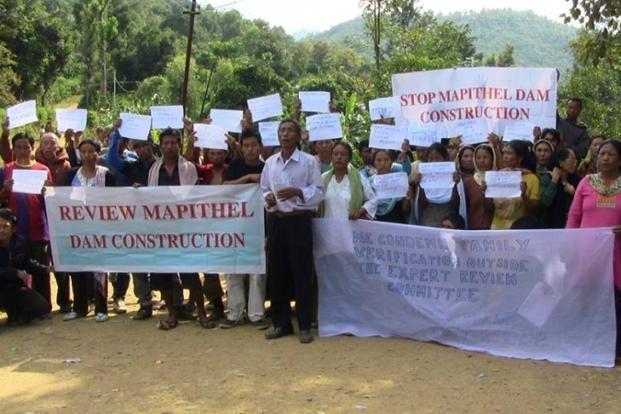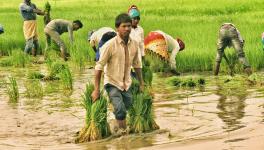How the Mapithel Dam in Manipur is Affecting its Natives

Image Courtesy: Live Mint
On March 25, a Joint Press Note was issued by the Mapithel Dam Downstream Affected Peoples (MDDAP), the Mapithel Dam Downstream Affected Village Level Committee (MDDAVLC) and the Citizen’s Concern for Dams and Development (CCDD). The press note was delivered at the Manipur Press Club. The organisations demanded that the water from the Dam not be released. They claimed that an unofficial communication from the Irrigation and Flood Control Department (IFCD) was relayed to the downstream people on March 24 that the water would be released on March 26. This gave the people downstream less than 36 hours to evacuate. They slammed the Government of Manipur and stated that “[a]ny human and property loss caused by the sudden release of the water including loss of human life will be the sole responsibility of the Government of Manipur.”
The Mapithel dam is a contentious project and was first proposed in 1980. However, the approval for diverting land to the project was given in 2014. The dam is located on the Thoubal River in the Mapithel Valley. The persons who are affected by it belong to the three major communities of Manipur. The upstream affected people are mostly Naga. The downstream affected persons are mostly Kuki and Meithei. Hence, the dam has proved to be rather non-discriminatory in affecting people. The upstream villages have been submerged, in complete violation of the Forest Rights Act, among other legislation. Chadong Village, a village once known for its vegetables has no cultivable land anymore, let alone houses as it has been completely submerged.
Downstream, the villages affected suffer from the lack of water. The villages here depended on the Thoubal River for irrigation and fishing. They also supplemented their income with sand and stones collected from the river banks which enabled them to send their children to school. The dam has led the villages closer to the dam to have sleepless nights since as soon as the water began filling, the dam sprung a leak. After the river had stopped flowing, many children have dropped out of school as their parents are unable to afford their education. If this were not bad enough, several parents have put their children in orphanages, since feeding them has become so difficult. In one thoughtless act of the Planning Commission, the dam has destroyed so many villages either by drowning them or starving them.
In 2017, the National Green Tribunal (NGT), Kolkata Bench passed an Order directing the state government to adhere to the procedure laid down in the Forest Rights Act. The Tribunal also directed the Government of Manipur to ensure that the Gram Sabha or its equivalent is consulted in accordance with the Act. The Tribunal had also commented that “[t]he stated case on behalf of the state no doubt is that due clearance had been obtained for the transfer of forest land from the village authorities of the affected villages but, we are not certain as to whether it was a willing clearance and as to whether the compensation and the rehabilitative measures provided were to the satisfaction of the displaced persons.” The Tribunal was obviously suspicious of the state and Union Government’s contentions that all applicable procedures had been adhered to. Given the strongly worded joint press statement of the downstream affected persons, it is likely that this Order has not been complied with.
Get the latest reports & analysis with people's perspective on Protests, movements & deep analytical videos, discussions of the current affairs in your Telegram app. Subscribe to NewsClick's Telegram channel & get Real-Time updates on stories, as they get published on our website.























